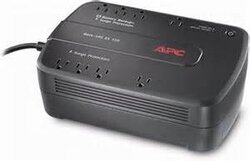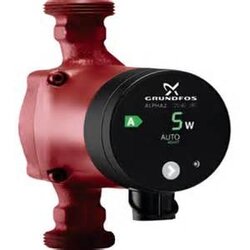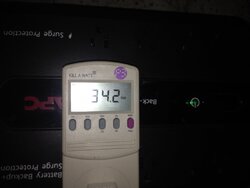In 2013, we went a total of about 10 days without electricity, 5 of those days were in a row when the temps were near zero. I have a generator, but someone is not always around to keep it running. So i bought some insurance in the way of a computer UPS (battery backup)
This is a used one i bought for $25.

First, in anticipation of this project, i purchased a pair of grundfos alpha 2 circulators. It was an easy decision as they will pay for themselves in less than 2 years with the electricity they save.

Then i condensed all electrical devices related to the boiler from 4 down to a single circuit and purchased a pair of deep cycle batteries:

After connecting the new batteries to the UPS, i plugged everything in and took some measurements. This is a photo of the kill-o-watt meter plugged in with everything running, except the LED porch light.
Less than 35 watts! I find that to be almost magical.

In the coming days i will try to do some performance testing to see how long the system will run on battery power.
This is a used one i bought for $25.

First, in anticipation of this project, i purchased a pair of grundfos alpha 2 circulators. It was an easy decision as they will pay for themselves in less than 2 years with the electricity they save.

Then i condensed all electrical devices related to the boiler from 4 down to a single circuit and purchased a pair of deep cycle batteries:

After connecting the new batteries to the UPS, i plugged everything in and took some measurements. This is a photo of the kill-o-watt meter plugged in with everything running, except the LED porch light.
Less than 35 watts! I find that to be almost magical.

In the coming days i will try to do some performance testing to see how long the system will run on battery power.

